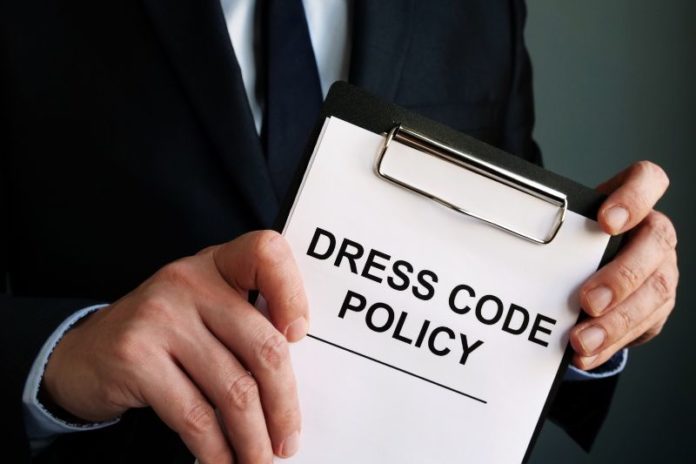Aided by liberal Members of Congress and armed with a taxpayer-funded report from the Government Accountability Office (GAO), the federal Department of Education is set to embark on a crusade to establish a uniform, national school dress code in order to ensure “equity and safety.”
Dress codes have long been targeted by the Left as violative of students’ civil rights. Recently, with the rise of “equity” as the shibboleth of the Left, groups such as Planned Parenthood consider dress codes as tools of “sexism, racism, and transphobia.” Teacher-based organizations, such as We Are Teachers, have hopped aboard the anti-dress code bandwagon, declaring, for example, that dress codes must be “gender neutral” and pass a “diversity test.”
Who would have thought a generation or two ago that simply requiring students to dress appropriately was so sinister.
To be fair, there are instances where teachers and school administrators misuse dress codes; abuses that should not be tolerated. However, concluding that dress codes constitute a civil rights violation and urging the Education Department to implement a national standard to ensure they do not “discriminate” in any way against anyone at any time, is a typical overreaction by the Nanny State. Yet this is precisely the direction in which the Department appears headed, as revealed in its response to the GAO study.
Never shy about coming up with ways to spend taxpayer dollars, the Education Department’s Office of Civil Rights responded to GAO’s recommendation that it “design . . . equitable and safe dress codes” by committing to devote “resources” (i.e., taxpayer dollars) to develop such codes for K-12 public schools nationwide. In order to accomplish this goal, the Department also (of course) would have to collect massive amounts of “data” to ensure the resulting plans are “equitable.”
The ACLU often is a partner in Uncle Sam’s crusade to weaken the ability of local schools to develop and administer rules for running their schools in ways that make most sense for the communities in which the students and parents live. Bringing lawsuits against local schools trying to maintain a degree of autonomy in dress codes is a favored tool with which to undercut such local policies.
These legal challenges have gone so far as to allege, in some cases successfully, that a charter school’s dress code simply requiring girls to wear skirts and boys to wear trousers is a violation of both the U.S. Constitution and Title IX of the Education Amendments of 1972.
Court challenges against dress codes and other local school policies being sexist or racist are not new. What is new, are charges that dress codes discriminate against LGBTQ+ students and therefore are “inequitable.”
The GAO report authors also discovered that schools with “strict” dress codes appear also to be among those that enforce stricter discipline policies generally – something the GAO found quite troubling.
According to the GAO’s research, such policies reflect a bias against girls, Blacks, and transgender students. The study made clear that requiring modesty with regard to clothing worn by female students must be no different from standards enforced as to boys and transgendered students.
The idea that public schools should be able to enforce reasonable dress codes for students, as a way to help foster an environment that focuses on educating the students with minimum distractions, and on keeping them safe, used to be a common sense and widely accepted notion.
Now, as is clear in the GAO study and in the Education Department’s well-known predisposition to mandate all manner of standards for virtually every aspect of public school life, it is becoming increasingly difficult for local schools to maintain reasonable disciplinary and dress code policies.
In the eyes of these Nanny State bureaucrats, dress codes that prohibit school-aged girls from wearing revealing or sexually suggestive clothing reflect old fashioned and debunked ideas that boys might be “distracted” by such attire. In the Bizzarro World envisioned by GAO and the civil rights zealots at the Education Department, teen-aged boys are not distracted by the way their female classmates dress, and dress codes predicated on such antiquated ideas actually endanger girls and should no longer be tolerated.































